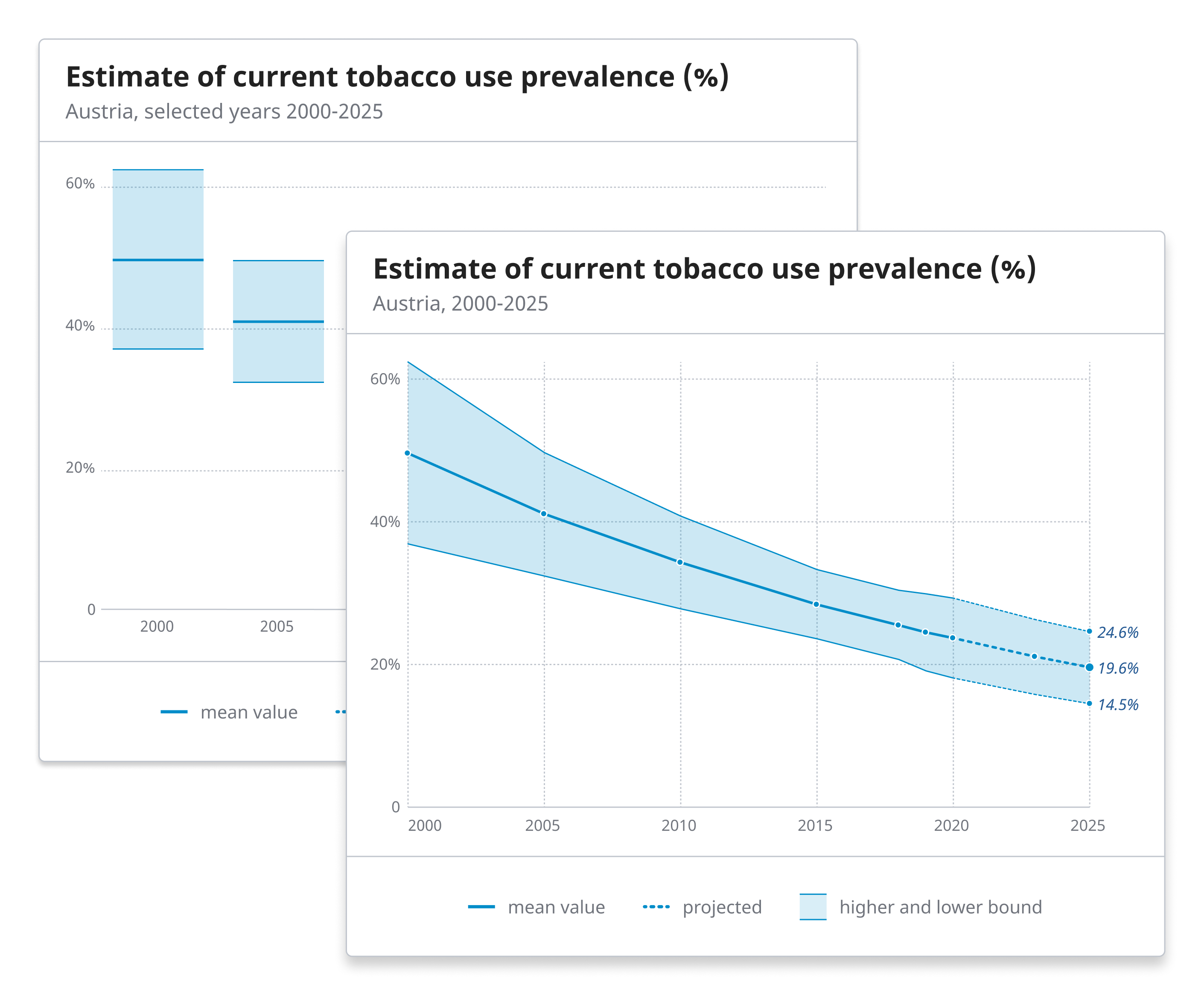Enabling rich data experiences for everyone goes beyond just providing better looking charts — by establishing a coherent, expressive and inclusive data design language, considering the interplay of text with graphical content and taking a variety of user needs, capabilities and communication channels into account.
Deliberately not designed as a rule set, but rather a toolbox, the DDL includes a chart library, design guidelines, colour and typographic style specifications with usability guidance for internationalization (i18n) and accessibility (a11y), all reflecting our data design principles — ready to use and apply in a variety of settings and environments.
For our content creators, we provide an easy to use toolbox, tailored to WHO publishing needs. For our audiences, our approach enables consistent, clear and transparent access to public health data from a trusted source.
